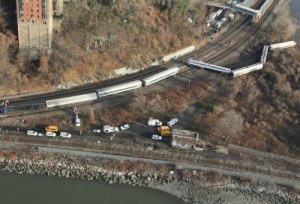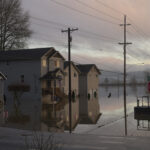Metro-North Railroad, the nation’s second-largest commuter rail system, on Wednesday released a final report on what it has done to improve safety following a series of accidents last year and said it has completed most of its priorities.
In a 100-day action plan, Metro-North said it has established an investigation unit to look into the root causes of accidents, overhauled a system safety plan, reviewed and improved employee training programs and made other changes. Metro-North, which serves 281,000 riders a day in Connecticut and New York, second only to the Long Island Rail Road, said it still must install on trains this year alerter devices, which are designed to ensure engineers remain responsive.

The engineer on a Metro-North train that derailed Dec. 1 in the Bronx, killing four passengers and injuring more than 70 others, told federal investigators he felt strangely “dazed” before his train hit a curve. The train traveled into the curve, which has a 30 mph speed limit, at 82 mph.
The engineer said he was “apparently not” clearheaded enough to realize he was entering a curve.
The Federal Railroad Administration, which responded to the derailment, issued a harshly critical report in March, saying Metro-North allowed safety to erode while pushing to keep its trains on time.
In addition, a track worker in Connecticut was struck and killed by a Metro-North train in May 2013 just 11 days after a derailment in Connecticut injured scores of passengers.
Connecticut Gov. Dannel P. Malloy, a Democrat, said the report took longer than he wanted but Metro-North is making itself safer. He asked the Metropolitan Transportation Authority, the parent agency of Metro-North and the LIRR, to “pull together” the 100-day plan “so that riders can get a clear sense of what they’re doing to restore confidence in the railroad.”
U.S. Sen. Richard Blumenthal, a Connecticut Democrat, said Metro-North’s promise to commuters to adopt concrete measures to restore safety and reliability “is far from fulfilled.” He rapped the rail line for recent service disruptions caused by a 118-year-old bridge that was stuck twice in the open position over the Norwalk River, blocking trains from running.
A Metro-North spokesman said he had no comment in response to what Blumenthal said.
Metro-North said it has been monitoring its service and has considered train crew observations, customer comments and customer counts to continue to improve schedules. It said that, as a result, minor changes to a few morning rush hour trains on New York’s Harlem line and Connecticut’s New Haven line have been identified and are being put in place in phases to reduce crowding and improve train connections.
Was this article valuable?
Here are more articles you may enjoy.

 Truckers Who Fail English Tests Get Pulled Off Roads in Trump Crackdown
Truckers Who Fail English Tests Get Pulled Off Roads in Trump Crackdown  NYT, Chicago Tribune Sue Perplexity AI as Copyright War Rages On
NYT, Chicago Tribune Sue Perplexity AI as Copyright War Rages On  Pacific Northwest Braces for Even More Flooding Rain This Week
Pacific Northwest Braces for Even More Flooding Rain This Week  Zillow Deleting Climate Risk Scores Reveals Limits of Flood, Fire Data
Zillow Deleting Climate Risk Scores Reveals Limits of Flood, Fire Data 